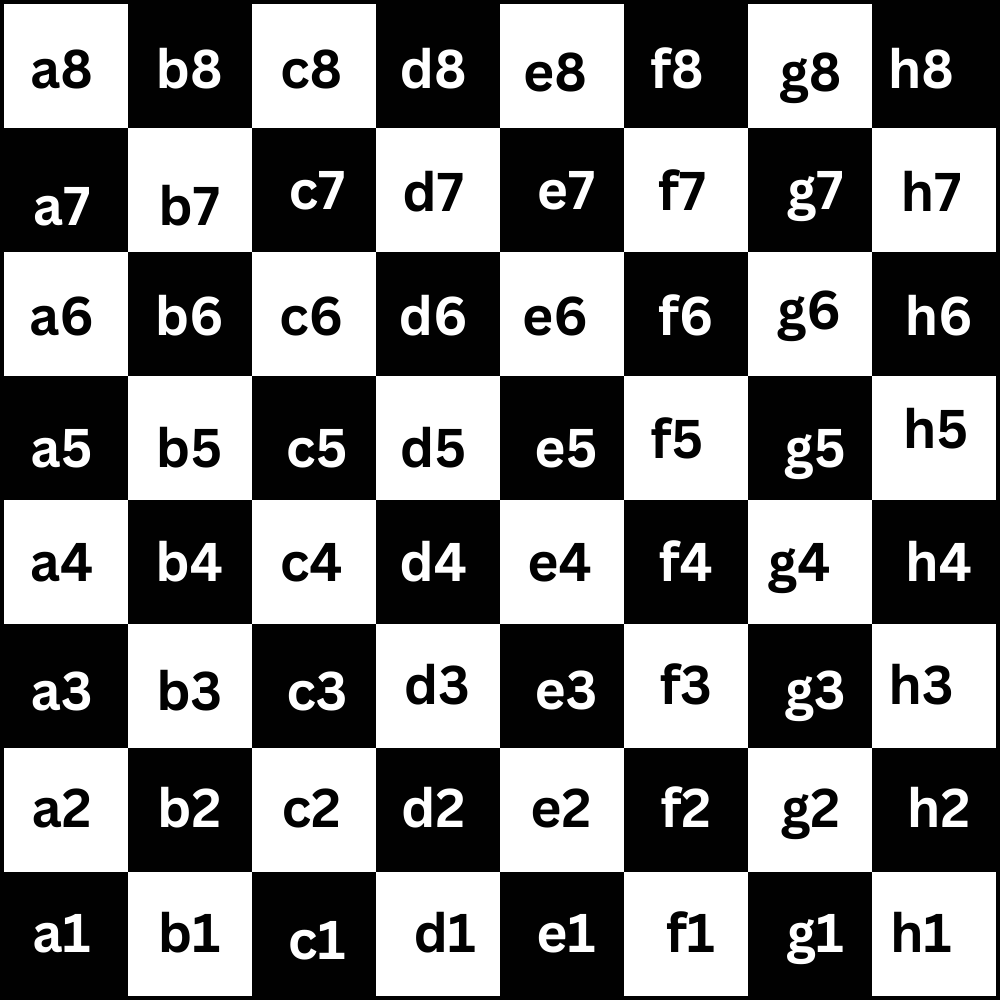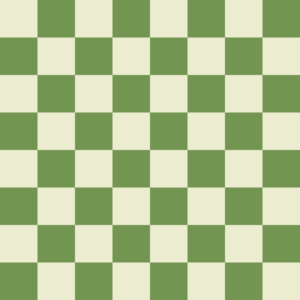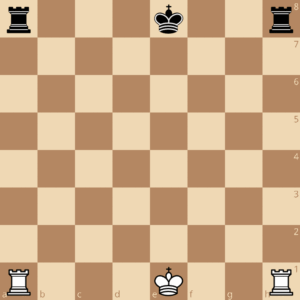Out of the billions of web pages available on the internet, you landed here. Do you know what that means? Let me tell you – it means chess is your true love 😅.
How about talking to your love? I know you are like – “ ‘talk’ to chess? Come on! You must be kidding!”. No, I am NOT! You can literally TALK chess through the notations.
Notations is the language of chess. You can discuss your games without a physical chessboard, write down your moves on paper for record. Without the magic of notations, you would not be able to relive the brilliant moves that Mikhail – The Sacrifice King – Tal played against Bukhuti Gurgenidze in 1957. I reckon most of you weren’t even born yet. Just Kidding 😅.
You may have guessed already that blindfolded chess games are played using notations itself. What! You didn’t know blindfold chess exists? Let me tell you briefly: it’s a game where one player – or both of them – wears something that covers their eyes and play chess by only “Talking”. Sounds fun? It is! But you won’t enjoy it if don’t know the magic.
When I first watched a chess game on YouTube, I heard them mentioning the name of English letters and numbers frequently – in fact, in every move. I thought it must be some high-level chess thing.
Soon after I found that it’s an essential part of the game. I then started to talk my games with my younger brother – and thus – I began to develop my notation skills.
So, how do YOU learn notations? The answer is simple. Just walk through this article and you will have the knowledge to flex on your friends!
What is Notation?
So, what actually is notation?
As mentioned earlier, it is the language of chess. Whenever you make a move in chess – it can be captures, checks, checkmates, en passant, castling, or even a normal move – there is a certain way to write it down (or to speak it). Let me give you an example.
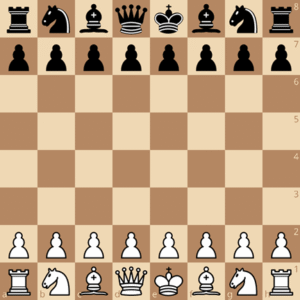
This is the starting position of a chess game. Each player is equipped with 16 pieces on an 8×8 square-shaped board. White plays the first move of the game – as per the rules.
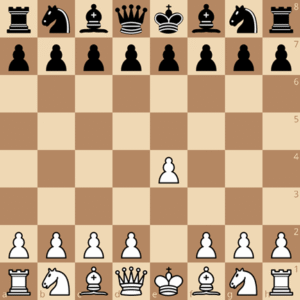
Let’s assume white played the pawn of e-file to the square e4. This move will be written as “1.e4”. So, when someone says one e4 during a game – or analyzing a game – it means the player has played a pawn to e4 square in his first move – which is considered a ply. And THIS is what we call the notation in chess.
Evidently, there are other variations and symbols in notation. This is the simplest example to give you a brief idea about what it is. Keep going, and you will discover many more!
The Algebraic Notation
There are several types of chess notations available. The algebraic notation is the standard one – this is the one used today.
You will see this type of notation in all the contents on the internet – books, online courses, the YouTube videos – you name it. Algebraic notation involves –
- The move number
- The piece symbol
- The square name the pieces are moved to
The basic structure looks like this. Additionally, there are special symbols written for checks, captures, checkmates and other special and regular moves. Let’s dive deep into it.
Piece Symbols
We’ll start by learning the symbols of each piece in algebraic notations. It just means that the pieces have unique identities – aka characters – aka symbols.
There are six types of pieces in chess. Since you have come this far reading here, I reckon you know it already 😁. Let’s have another quick look anyway! The pieces are –
- Pawn
- Knight
- Bishop
- Rook
- Queen
- King
Each of the pieces are represented by certain characters while writing them down. Let’s get familiar with each of them in a glance.
Piece | Character |
King | K |
Queen | Q |
Rook | R |
Bishop | B |
Knight | N |
Pawn | No Character – only the square names |
There are some patterns in the process. Every (almost) piece’s character is the first letter of the piece’s name itself. For example, K for king, B for bishops.
There is an exception – like Chemistry 😬. The knight. Its name starts with K. But this is occupied by your majesty already. The knight had to sacrifice the first-letter-trend for his king. Just like this, N is the character we would the knight with.
One more thing to notice here is that the pawns don’t have any symbols to express them. Instead, you just have to mention the square names they are moved to.
Wait what? You have noticed all these already?! You are smarter than I thought 😎.
Let’s See the Moves
If you have come this far, you must have got the idea that the knowledge of each square of the board is absolutely essential to learn chess notations. I guess you have that. With that, you are now equipped with all the basics you need to fully understand the realm of algebraic notations. Let’s start by the regular moves.
Simple Moves
See the example of and endgame below. It’s a King + King and a Pawn.
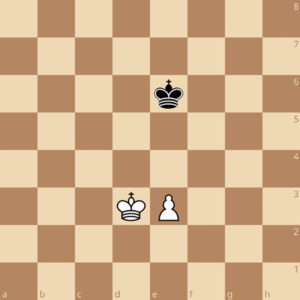
White is in a winning position (of course, that is not our discussion point) – and the best move in the position is to put the white king to the e4 square.
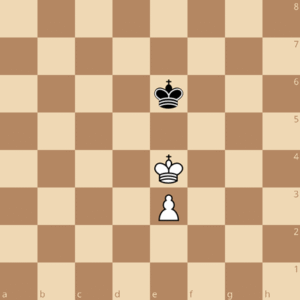
Assuming this is the first move of the position, the move will be notated as 1. Ke4 – you can say it loud as one King to e4 – or simply, one King e4 – both means the same.
Let me break it down for you. Whenever you are writing a move of algebraic notation – you have to maintain the followings –
- Write the move number first (1 in this case)
- Write the unique character of the piece that was moved (K in this case)
- Write the square name of the piece has been moved to (e4 here)
Now it is black to move. Black responds by moving the king to the d6 square.
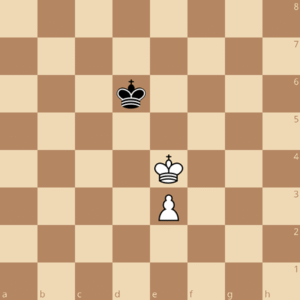
You will write this move as 1…Kd6.
It still says that this is the 1st move as there is a 1 in the beginning of the move. The dots tell you that white had played something, and now the move is made by black.
All the other regular moves with other pieces follow the same principle:
The Move Number The Piece Character The Destination Square
I’ll give you some more examples.
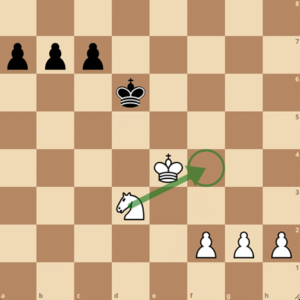
White wills to put its knight to the f4 square. If he plays it, can you guess the notation?
Assuming this is the first move of the position, it will be 1.Nf4 – one Knight f4.
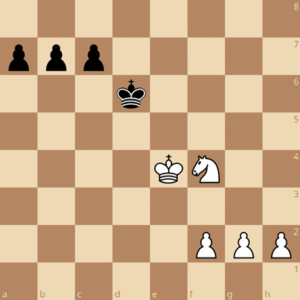
Black – in response – wants to make a queen as soon as possible. He pushes his a-pawn forward to achieve this. Black pushes the pawn to a5.
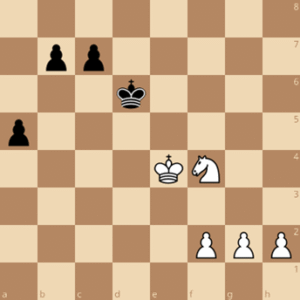
Can you write the notation yourself now?
You might be saying, “Oh that’s easy! It’s 1…Pa5!”
Gotcha! 😏
You see, this why I included this example. You are not correct unfortunately. But hey! You are doing great understanding the structure. Just need a little polish and you will be fine.
Pawns do not use unique characters to identify them. You can just simply write the destination square down they move to.
So, what’s the answer? It is simply 1…a5. Yeah, as simple as that.
I hope you have a nice idea of the regular moves to write the algebraic notation.
Captures
It’s time for the captures. Captures are when you place your piece on a square occupied by an enemy piece and remove that piece from the board. The notation is similar to what we have learned so far with just a little addition. There’s no better way to learn other than with an example, right? We’ll see one.

White is to move. White’s rook stares at the free, juicy pawn on d5. Also, there is no harm in taking the pawn. So, why not?
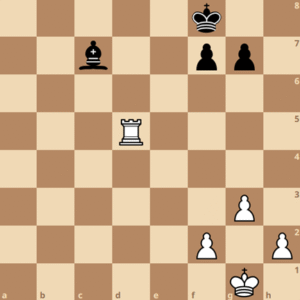
White captures the free pawn. So how do you notate it?
Well, the structure remains almost the same. First comes the move number – followed by the piece symbol you just moved. In this case, destination square at last. It would be 1.Rd5 so far.
To denote that it is a capture, you have to add an extra x between the piece symbol and the destination square name. It would look like 1.Rxd5 now. You will read it as Rook Takes d5. It doesn’t matter which piece was on the d5 square previously. The notation remains the same.
The principle of capturing is the same for other pieces as well – except the pawn. Taking the above example, you just have to replace the R with the piece symbol of the piece you capture.
Pawn Captures
Since there is no special character for pawns, the capturing notation for pawns is a little different. We will learn this with a short example.
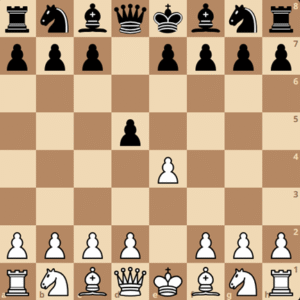
This position is of the Scandinavian opening after the first move. One of the lines suggests to capture the pawn on d5. Suppose you take the pawn.
Since your pawn is on e4 and the opponent’s is on d5, the notation would be 2.exd5 – say it out loud as e Takes d5.
The first e denotes the original position of the white pawn, x says it’s a capture, and d5 is the square of the pawn that was removed – or captured – from the board.
Checks
Moving forward to checks. A check means your king is under attack. The notation is the same as we saw in the Simple Moves section – only an additional + to denote that it’s a check.
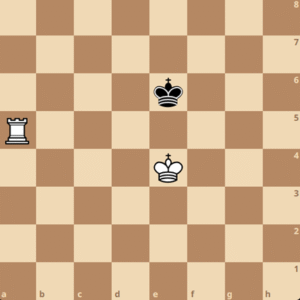
In this position, the white rook wants to give a check which makes it easier to win the game.
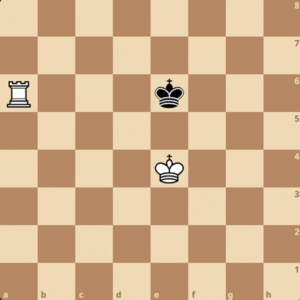
The rook checked the black king by moving onto the a6 square. This would be written as 1.Ra6+. You see, this almost looks the same as the regular moves we learned earlier. The extra + indicates it’s a check.
Checkmates
Checkmate denotes the end of a game. The king has no escape from the check. We put a “#” at the end of a checkmate move to indicate the completion of a game.
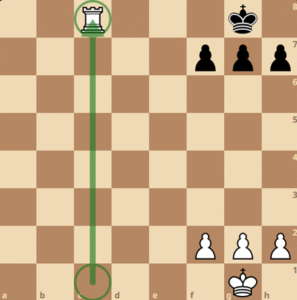
The white rook delivered a back rank checkmate to the black king. This move is simultaneously a check as well as a checkmate.
It will be written as Rc8# – which means that the rook gave a check in the c8 square and you know it’s a checkmate by spotting the additional “#” at the end of the move.
Castling
There are two types of castling
- The Short Castle – Kingside Castling
- The Long Castle – Queenside Castling
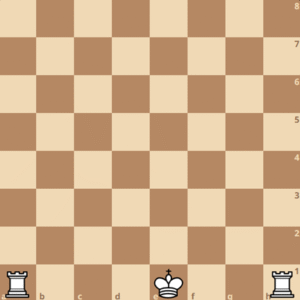
As the names suggest – when king is castled to the shorter side, it is a short castle. Denoted as O-O.

When it is the other way around, it will be called a long castle – and notated as O-O-O.
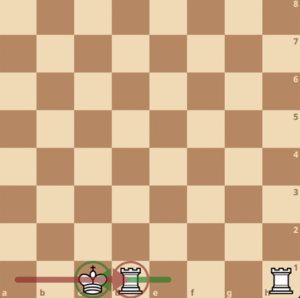
Same Square Case
Often times, there are situations when multiple pieces can go to the same square. It creates confusion. But there’s way of denoting this too.
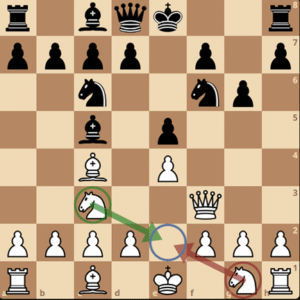
In this position, both the white knights can go to the e2 square. And the position demands the knight on g1 to travel to the e2 square.
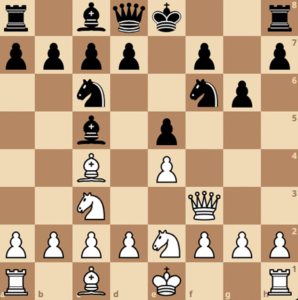
In this case, you must specify the piece that is moved.
We must find some uniqueness of each knight that makes them apart. Notice that both the knights are in different files – the g-file and the c-file. We can specify the knights based on this unique trait. So, the notation will be Nge2.
N is obviously stands for the knight. The following g refers to the original file the knight was on. And lastly, e2 tells us that the g-file knight moved to e2.
But what if both the knights were in the same file as well? Well, that’s a great question. It brings me to the next part.

In this example, both the knights are on the same file – aka the d-file. Only one of them can go to b4. Let’s see what happens if the d3 knight moves.
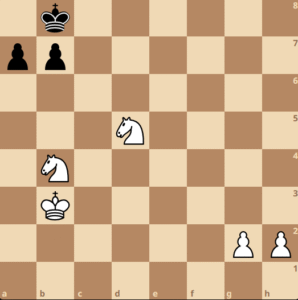
The only uniqueness for both the knights is their original square itself. You cannot place two pieces on the same square. We will use the only unique characteristic while writing the move – that is Nd2b3.
The N is for knight – d2 is the original square the knight was on previously – lastly, b3 is the destination the knight reached. This is how you deal with it.
Conclusion
Chess notations are a superpower in chess. It allows you visualize positions without any physical boards. It may seem hard to do so at the beginning. But hey, that’s the nature, right? You will get better at it with time. Keep patience and practice the hell out of it.

